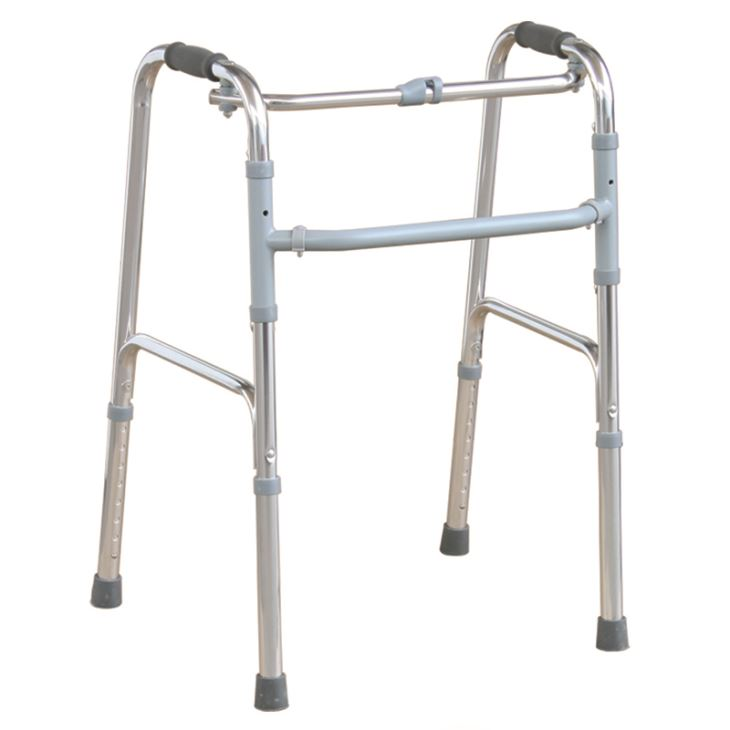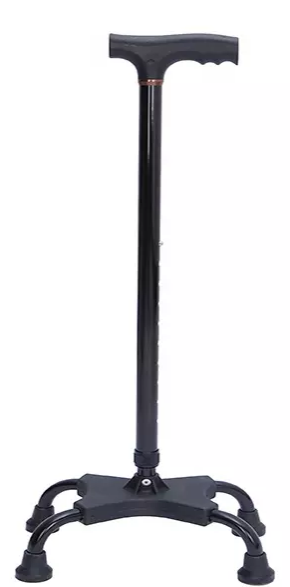Walking aids and crutches are both lower limb assistive tools, suitable for people with walking difficulties. They mainly differ in appearance, stability, and use methods. The disadvantage of the weight bearing on the legs is that the walking speed is slow and it is inconvenient to go up and down stairs; the crutches are flexible and fast, but the disadvantage is that they are poor in stability. How to choose mainly depends on the actual situation of the patient. Let's find out which is better, a walker or a cane.
1. What is the difference between a walker and a cane?
For patients with lower limb dysfunction, acute injury and postoperative patients, appropriate assistive tools should be used during the acute symptom period and rehabilitation period to relieve acute symptoms, prevent re-injury and promote healing. Commonly used lower limb assistive tools mainly include walkers and crutches Two, so what's the difference between them?
1. Different appearance
The appearance of the walker is similar to "ㄇ", with four legs; crutches, also known as axillary sticks, are upright and placed under the armpit, with only one support point on each side.
2. Different stability
Walkers have four legs, so they are more stable than crutches.
3. Different methods of use
A walker is generally supported by both hands, and the walker is used to provide support to move forward. The method of using a crutch is to place it under the armpit and rely on the muscles of the chest, abdomen, shoulder girdle, and arms to provide support to move forward.
2. Which is better, a walker or a cane
There is a certain difference between a walker and a cane. For people with inconvenient legs and feet, is it better to choose a walker or a cane?
1. Advantages and disadvantages of walking aids
Compared with crutches, walkers have a more complex structure, more supporting feet, and a larger support area. Therefore, they can provide more stable support than crutches and help patients walk. Compared with crutches, its advantage can reduce the load on the patient's legs and improve the patient's walking ability, but the disadvantage is that the walking speed is slow when using a walker. Although the walking effect is good on flat ground, it is inconvenient to go up and down stairs. In addition, the volume and structure of walkers are larger and more complicated than crutches.
2. Advantages and disadvantages of crutches
Compared with walking aids, crutches rely on many powerful muscle groups in the chest, abdomen, shoulder girdle, and arms to provide support, and can provide strong power, but the stability is average, and the requirements for the patient's balance ability are higher. The advantage of crutches is that they are flexible and fast, and can provide a powerful movement speed. With the support of crutches, people with strong bodies can even move at a speed exceeding ordinary people. After stopping the movement, the hands and arms can also be in a free state. Disadvantages of crutches are poor stability and compression damage to the axillary nerve (if used incorrectly).
It can be seen that walking aids and crutches each have their own advantages, and it is not necessarily which one is better. The choice is mainly based on the patient's condition: even if the bottom of the crutch is designed with multiple support points, it still only supports one side, that is, it can only support Unilateral body, suitable for elders with better physical strength and leg strength or patients with unilateral weakness (such as unilateral stroke or trauma). The walker is an "N"-shaped support frame, which is suitable for the elderly or patients who are weak in the lower body, such as those who have undergone major operations such as joint replacement.
Post time: Feb-07-2023







